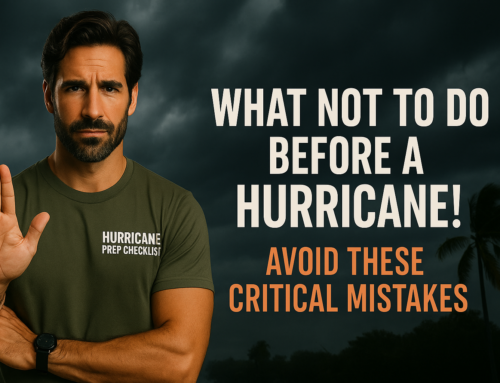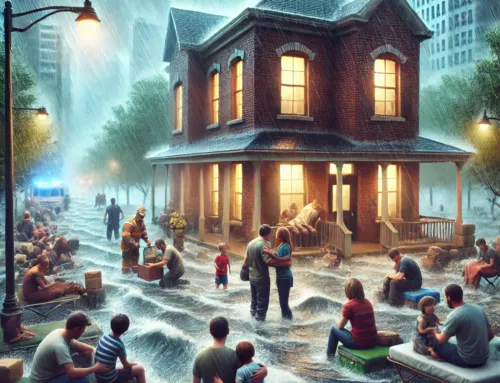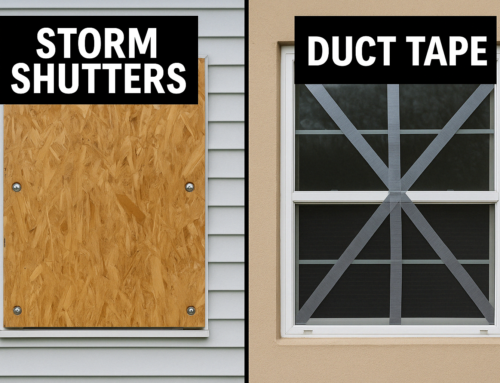Why You Need a Hurricane Survival Guide
Hurricanes are among the most powerful and destructive natural disasters. Without proper preparation, they can leave you stranded without power, food, or clean water. This hurricane survival guide will help you understand the steps to take before, during, and after a hurricane to protect your home, your family, and yourself.
Before the Hurricane: Preparing for the Storm
1. Build a Hurricane Emergency Kit
- Water: At least one gallon per person per day for a minimum of three days.
- Non-perishable food: Canned goods, protein bars, and dried fruit.
- Flashlights & extra batteries: Avoid using candles due to fire hazards.
- First aid kit & medications: Ensure you have a two-week supply of prescriptions.
- NOAA weather radio: Stay updated if power and internet fail.
- Portable phone chargers & power banks: Keep devices charged.
- Cash & important documents: Store them in a waterproof bag.
2. Secure Your Home
- Install storm shutters or board up windows with plywood.
- Reinforce doors and garage doors to withstand strong winds.
- Clear your yard of loose objects that could become dangerous projectiles.
- Stock up on sandbags to protect against flooding.
- Check your roof for loose shingles and secure them.
3. Plan Your Evacuation Route
- Know your evacuation zone and shelter locations.
- Have a pre-packed go-bag with clothes, toiletries, and essentials.
- Keep a full tank of gas in your car before the storm hits.
- Have a pet evacuation plan and necessary supplies for them.
During the Hurricane: Staying Safe Inside
1. Shelter in the Safest Part of Your Home
- Stay in an interior room away from windows and doors.
- Keep emergency supplies close by.
- Have blankets, pillows, and a mattress ready in case you need extra protection.
2. Monitor Emergency Updates
- Use a battery-powered or hand-crank radio to receive weather updates.
- Follow instructions from local authorities regarding evacuations.
3. Be Ready for Power Outages
- Turn off major appliances to prevent power surges.
- Use flashlights instead of candles to reduce fire risks.
- Keep refrigerator and freezer doors closed to preserve food.
4. Avoid Dangerous Areas
- Do NOT go outside until officials confirm it is safe.
- Stay clear of windows in case of flying debris.
- Never drive through flooded roads—just 6 inches of water can sweep away a vehicle.
After the Hurricane: Recovery & Safety Tips
1. Assess Damage with Caution
- Watch out for downed power lines and report them immediately.
- Check your home for structural damage before re-entering.
- Take pictures of any damage for insurance claims.
2. Avoid Contaminated Water
- Use bottled water or boil tap water if contamination is suspected.
- Do NOT use floodwater for drinking, cooking, or cleaning.
3. Restock Emergency Supplies
- Replenish food, water, batteries, and first aid supplies.
- Make a list of items you used and need to replace.
4. Be Cautious with Generators
- Always use generators outdoors, away from windows, to prevent carbon monoxide poisoning.
- Follow manufacturer instructions for safe operation.
5. Stay Informed & Prepared for Future Storms
- Sign up for emergency alerts from FEMA or local authorities.
- Review your hurricane preparedness plan and improve where necessary.
Final Thoughts: Stay Ready with This Hurricane Survival Guide
Surviving a hurricane requires careful preparation and quick action. Use this hurricane survival guide to keep your family and home protected before, during, and after the storm.
📥 Download the full guide now to ensure you’re fully prepared!






